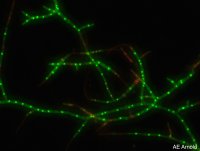Genetics
Dimensions of Biodiversity: An Interdisciplinary Study of Hyperdiverse Endophytic Fungi and their Function in Boreal Forests
Aim 4: Identify mechanisms underlying genetic diversity of endophytes
For additional information, contact Ignazio Carbone (ignazio_carbone@ncsu.edu) and Georgiana May (gmay@umn.edu)
Symbiosis reflects the dynamics of evolutionary traits encoded by a fluid genome, including contributions from classical chromosomal inheritance, horizontal transfer, and changes in rates of genome evolution reflecting acquisition or loss of endosymbionts. We will use focal strains to evaluate the relative and absolute contributions of three factors to the genetic diversity and resulting functional traits of endophytes: (1) cryptic endohyphal symbionts, focusing on endohyphal bacteria and mycoviruses; (2) nuclear genomic fluidity, including variation in (a) nuclear number and (b) mobile genetic elements; and (3) molecular and genomic evolution, examining genome architecture and gene content for signatures of mutation, drift, and selection processes resulting from shifts in function or symbiotic status. For the last we will sequence the complete genome of one strain within our primary model clade, forming the framework for the transcriptomics and comparative population-genomics analyses proposed here.






